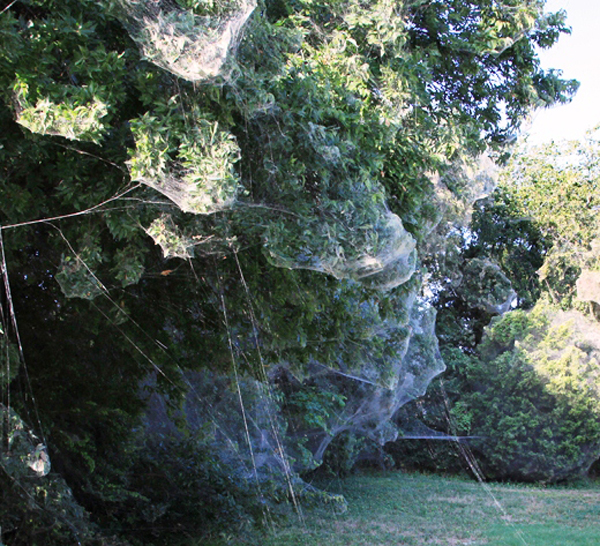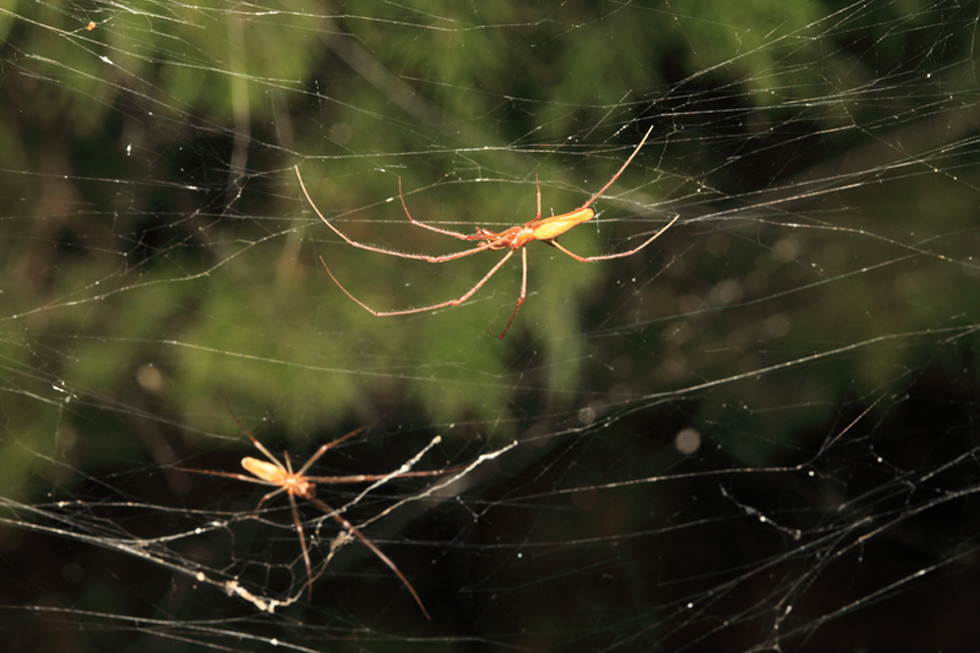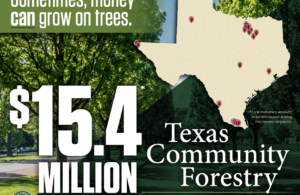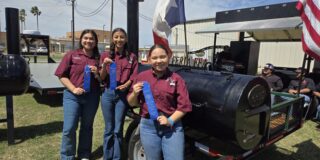- La Feria Native Soon To Retire From The Military This Summer
- Senior Eneece Avila Takes Pride in her State Title
- Dr. Noemi Infante, Harlingen Medical Center Open New Women’s Clinic
- Santa Rosa Cameron County Park Partially Reopens
- Santa Rosa Takes to Regionals Meet in Kingsville, Tx
- Long-Standing Nexstar Tower in La Feria Decommissioned
- Lionettes Powerlifting Meet
- Local Business Holds Event to Benefit RGV Shriners Club
- Knights of Columbus Holds it’s 30th Annual Golf Tournament
- KGBT Tower Dismantled
Giant Spider Webs Make Another Appearance in Dallas Area
- Updated: August 14, 2015
by Paul Schattenberg/Texas A&M AgriLife Extension Service
DALLAS – While traveling down CA Roan Drive in Rowlett recently, people have been exposed to an “eerie” sight on a number of trees lining that route, said Mike Merchant, Texas A&M AgriLife Extension Service urban entomologist in Dallas.
“CA Roan Drive is a quiet stretch of road running through Lakeside Park South in the Dallas suburb of Rowlett,” Merchant said. “But in the trees along a football field-length stretch of the drive, the spiders have been taking over.”
Merchant said “glistening webs are draping the trees like shrouds at Lakeside Park,” near Lake Ray Hubbard.

A large ‘communal’ spider web at the Lakeside Park South section of the Dallas suburb of Rowlett. Photo: Mike Merchant/Texas A&M AgriLife Extension Service
“Someone stepping off the road for a closer look will see thousands of lanky spiders darting among the webs that extend up to 40 feet into the trees,” he said. “There is a surreal quality to the extensive webbing covering these trees.”
Merchant said while rare, it is not unheard of that such massive web-works may appear once in a while. For example, he said, in 2007 the media reported about a giant spider web found at Lake Tawakoni State Park, about 35 miles from Rowlett.
“At the time, the discovery of the web was more than creepy – it was a revelation to many arachnologists — spider experts,” he said.
“That’s because spiders typically work alone to construct their webs. So finding spiders working together to build a huge web in what was more of a cooperative or ‘communal’ scenario was a real surprise for many experts.”
Merchant said in the case of the giant web that appeared in 2007, the spiders responsible for the nest construction were ultimately identified as Tetragnatha guatemalensis.
“Arachnologists had previously noted that this species is known to build communal nests when conditions are right,” he said. “But it is rare to see them building such large nests in the U.S. Spider experts have indicated that those ‘right conditions’ appear to include a glut of small insects like midges that emerge at night from lakes. Without lots of food, these communal webs just don’t seem to form.”
“These types of spiders are unusual in that they are not aggressive to other spiders of the same species on the same web,” he said. “They also are not known to bite or be harmful to humans.”
Because of their lack of aggression, Merchant said there is really no need to treat for them.

While the specific identity of the massive web-building spiders is as yet unknown, they are likely a long-jawed spider of the family Tetragnathidae. Photo: Mike Merchant/Texas A&M AgriLife Extension Service
“Insecticides or other treatments are really unnecessary as this spider is essentially harmless and, although the communal nest may look spooky, they too are basically benign and are a sight more to be appreciated than feared.”
Many arachnologists and others consider these nests natural works of art, he said.
“If you get the chance to take a drive along CA Roan Drive in Rowlett, you might want to take a few moments to stop and admire this spider handiwork. But please don’t touch the art.”






